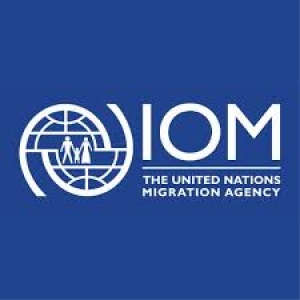Migrants are no exception to this development. Migrants use Google for preparing to move, mobile phones to stay in touch with friends and family, online media and social media platforms to keep up to date with developments in origin and destination countries, look for work or study opportunities, maintain existing connections and make new ones. This activity leaves behind digital footprints that — if collected and analysed in a responsible manner — can unlock important insights on migration flows and trends, valuable for informed policymaking.
Yet, the lion’s share of this information hitherto has remained untapped, despite its potential to contribute to protecting migrants’ human rights, fighting against human trafficking, and to support governments to better understand migration-related phenomena. Concerns related to digital surveillance, infringing data privacy and unethical uses of data led to a (well justified) wariness toward analysing data gathered mainly by the private sector through new technologies. Additionally, the data are scattered across different actors, such as mobile network operators (MNOs), internet companies, airlines, governments, and international organisations, and potential collaborations can come to halt due to missing frameworks defining the Do’s and Don’ts of using data to inform migration research and policy.
The Data Innovation Directory (DID) aims to contribute to tackling these challenges. Developed by IOM’s Global Migration Data Analysis Centre (GMDAC) and within the framework of the Big Data for Migration Alliance (BD4M) — a joint collaboration with the European Union’s Commission’s Joint Research Centre (JRC) — the DID provides easy access to existing projects aimed at better understanding migration and human mobility through new data sources and methodologies, such as satellite imagery, Artificial Intelligence (AI) and machine learning, social media and mobile phone data. Today, the potential of these data innovations for informing migration policy is far from being fully realized. Here are some early observations regarding how such innovations can improve our understanding of migration-related phenomena.
Introduce pioneering projects: Illustrating where and when data innovation helped to better understand migration-related phenomena
Timely and accurate information on migration flows have already helped save lives globally in contexts of natural disasters and emergencies. For instance, after the 2015 Nepal earthquake over 390,000 displaced people needed humanitarian support in surrounding valleys of Kathmandu. Thanks to insights obtained by analysing call detail records (CDRs) of mobile phones, emergency staff knew precisely where to execute disaster relief operations just three days after MNOs provided the data and nine days after the catastrophe occurred. During the ongoing coronavirus pandemic, innovative data — for instance, geo-located data of Google Maps — have helped governments analyse the effectiveness of physical distancing and lockdown measures. As a platform collecting and presenting such existing evidence on the realized and potential value of data innovation, the DID helps build the knowledge base on and case for data innovation and collaboration for migration.
Promote new partnerships and facilitate exchange of knowledge
Partnerships between governments, international organizations, the civil society, academia, and the private sector are key to harnessing data innovation for migration policy. The DID can contribute to connecting these stakeholders and facilitating new forms of public-private partnerships that can help accelerate the responsible use of innovative data to inform migration policymaking.
Support the development of new collaborative frameworks
Any collaboration on data innovation in the realms of migration and human mobility must establish and respect regulatory principles to address challenges concerning data privacy, digital surveillance and unethical use of data. The DID can help to inform the required frameworks — which, moreover, can also facilitate the use of privately-held data in the future, as recently noted in the special issue on COVID-19 of Migration Policy Practice. As a first step and as part of a project led by the GovLab, the BD4M has identified the needs for such collaborative frameworks by defining the most pressing questions on migration based on input from a global cohort of experts, validated through an open public campaign.
The road ahead: Building trust and knowledge in using innovative data sources for migration policy
Whether it’s the improved spatial resolution, the speed or the global scope, innovative data sources hold enormous potential to help better understand migration-related phenomena. At the same time, however, new ideas often come with old challenges and all innovative data sources — social media, mobile phone, satellite data, AI and machine learning — have one thing in common: They gather data automatically. They don’t come in the form of surveys or administrative registrations people actively take part in. People inadvertently generate data through their actions; and therefore, researchers and policymakers need to earn people’s trust first, proving that data from these digital footprints are put to good use while ensuring highest standards of data protection at all times. For this reason, the Data Innovation Directory aims to inform policymakers and the general public alike, and seeks to shed light on how exactly data innovations are capable of contributing to better understanding global migration.
We wish to thank all DID project owners who have contributed to the database and the Federal Department of Foreign Affairs (FDFA), Directorate of Political Affairs, Human Security Division, Switzerland for the funding allowing it to be developed. Are you working with innovative data too and seeking to better understand migration-related phenomena? If you wish to find collaborative partners, share your projects, or exchange about individual projects after having browsed through the DID, write to did@iom.int. We look forward to hearing from you!









